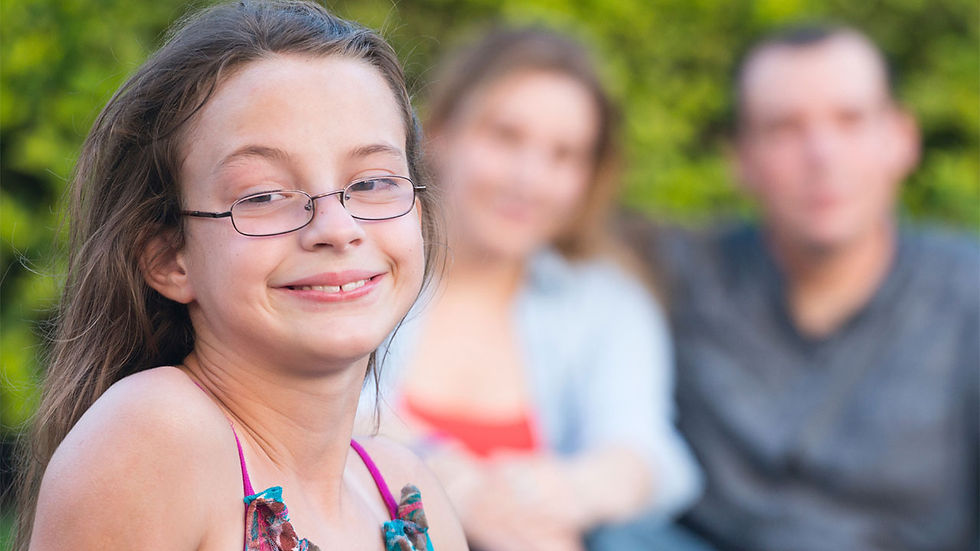Autism Spectrum Disorder and how it Affects Children
The definition and diagnostic criteria for Autism Spectrum Disorder (ASD) have changed dramatically since the first description of autistic tendencies in the early 1800s (Cook & Willmerdinger, 2015). ASD is a neurodevelopmental syndrome characterized by social reciprocity and communication deficits, as well as unusual restricted, repetitive behaviors (Lord et al., 2000). In the early 1900s, the dominant theories on autism adopted a psychogenic approach, which holds that autism is caused by emotional or psychological factors rather than biological or physical ones (Cook & Willmerdinger, 2015). Some of this was based on popular Freudian psychoanalytic theories at the time. These psychogenic explanations for autism were widely accepted in the medical community and persisted as a result of a lack of medical research into the cause of this specific disorder (Cook & Willmerdinger, 2015). Autism Spectrum Disorder is now divided into two categories: restricted and/or repetitive behaviors and impaired social communication and/or interaction (Cook & Willmerdinger, 2015). According to the Centers for Disease Control and Prevention, one in every 68 children has autism as of 2014 (CDC, 2014).
Autism research and advocacy groups have grown in tandem with changes in the definition and diagnosis of the disorder, as well as the increased incidence of autism. The Organization for Autism Research was founded in 2001 by parents and grandparents of autistic children who believed that applied research could help answer many of their daily questions (Cook & Willmerdinger, 2015). Autism usually manifests itself in childhood, if not earlier. Parents are frequently concerned in the first three years of life because their child is not using words to communicate, even though he or she recites passages from videotapes or says the alphabet (Lord et al., 2000). Though social deficits may not be obvious in the early years, they become more apparent as a child becomes more mobile and other children become more socially sophisticated (Lord et al., 2000). Young children with autism frequently do not seek out others when they are happy, show or point to objects of interest, or call their parents by name (Lord et al., 2000). Repetitive behaviors, such as using peripheral vision to look at lines or wholes, or specific hand and finger movements, begin to emerge during the preschool years (Lord et al., 2000).

Social Impact of Autism on Children
Autism disrupts interpersonal relationships. Symptoms include communication, socialization, behavioral, and interest impairments, as well as limited social skills. Families with autistic children and their children face a variety of challenges (Begum & Mamin, 2019). The challenge begins at a young age and lasts a lifetime. It is linked to other issues such as personal, professional, marital, and financial problems. These issues arise in a broader social context. Autism affects not only parents, but the entire family, including the marital system, parental system, sibling system, and extended family system. This often happens because parents do not send their children to any family program, community, or social activity (Begum & Mamin, 2019).
Students with Autism Spectrum Disorder's ability to function in a school setting can be complicated by their limited understanding of social situations (Begum & Mamin, 2019). Children with autism typically have rigid and limited play patterns and are unable to share their play desires and capacities, build friendships, or form a peer group. Interventions for children with autism are required to reduce parental stress and other effects on family and functioning (Begum & Mamin, 2019). Supports such as respite care, professional parent training, treatment, and self-help groups can all have a positive impact on the family (Begum & Mamin, 2019). A meta-analysis on the impact of respite care for children with developmental delays concluded in 2001 shows that ensuring respite care is beneficial for reducing parental stress and increasing coping abilities; however, no study has yet shown that respite care is appropriate for children with ASD (Begum & Mamin, 2019). Appropriate teacher training is a predictor of effective behavior management in ASD students. Social work professionals may focus on the client's strengths to avoid judging or blaming the client. As a result, they assist clients in becoming more aware of their accomplishments and strengths (Begum & Mamin, 2019).

Bullying and Children with Autism
While the reasons for an increased risk of bullying in children with neurodevelopmental disorders are complex, one possible explanation is impaired communication skills (Lin & Eapen, 2022). These can lead to peer rejection and difficulties in forming friendships. Impulsive behaviors, which are frequently associated with neurodevelopmental disorders, can also lead to difficulties fitting in, increasing the risk of social exclusion and subsequent bullying encounters, whether as a victim or perpetrator (Lin & Eapen, 2022). Being bullied is associated with a fourfold increased risk of self-harm or suicidal thoughts in adolescents aged 14-15 years. Children on the autism spectrum are more likely to be bullied in high schools than in primary schools (an opposite trend from non-autistic children). This happens because the differences caused by autism may be more pronounced and noticeable in high schools (Lin & Eapen, 2022).
Deficits in 'theory of mind' cognitive philosophy that children with ASD have, which refers to a person's ability to impute the mental states and perspectives of another person, are linked to both higher rates of misinterpreted bullying and victimization circumstances (Humphrey, 2021). Children on the autism spectrum have a more difficult time using empathy because they are unable to discern the feelings and emotions of their peers, which leads to low reports of bullying perpetration (Humphrey, 2021). These communication difficulties increased perpetrators' opportunities to victimize children with ASD (Humphrey, 2021). Because of certain behavioral traits associated with the autism spectrum, though, children with ASD have been identified as bullies in school (Humphrey, 2021). Bullying others is exacerbated by a lack of empathy and the inability to consider the perspectives of their peers (Humphrey, 2021). Children with ASD are unable to put themselves in the shoes of others and are unable to interpret situations, resulting in externalizing problems such as anger, aggression, physical harm, and so on. Because of their limited social problem-solving abilities, they are more likely to react aggressively in social situations with peers (Humphrey, 2021).

Helpful Treatments for Children with Autism Treatments
Although Autism does not have a definitive cure, there are things that can be done by family, therapists, and schools to facilitate learning and adaptation for the child. The first is psychosocial interventions. A wide range of psychosocial interventions has been developed to address both the core and associated symptoms of ASD. Applied behavior analysis (ABA) is a treatment that is based on learning and operant conditioning theories. It consists of specific intervention goals combined with positive reinforcement (verbal praise, tokens, or edible rewards), with repetition of learning trials being a key component (DeFilippis & Wagner, 2016). It was hypothesized that early, intensive ABA intervention would result in remarkable outcomes, such as nearly half of the children receiving the treatment gaining significant IQ points and being mainstreamed into regular classes (DeFilippis and Wagner, 2016). Children are more likely to learn and retain behaviors that receive positive reinforcement (reward) and are less likely to learn or retain behaviors that do not receive positive reinforcement; or reward (Roberts & Prior, 2006). Through careful manipulation of the environment and the provision of contingencies, behavioral interventions aim to teach and increase targeted positive behaviors while decreasing or eliminating inappropriate or non-adaptive behaviors (Roberts & Prior, 2006).
The next one is a therapy-based intervention that focuses on communication and social skills development (Speech Pathology) or sensory-motor development: Occupational Therapy (Roberts & Prior, 2006). These interventions are most likely to be used in conjunction with others. A variety of communication-focused interventions are commonly used with autistic children (Roberts & Prior, 2006). These can be used independently or as part of a more comprehensive program. Many of these strategies are referred to as 'augmentative and alternative communication' (AAC). Picture symbols, manual signing, and speech-generating devices are examples of AAC strategies (Roberts & Prior, 2006).

The last one is auditory integration training. The intervention aims to address the hearing distortions, hyper-acute hearing, and sensory processing anomalies are said to be the cause of the condition (Roberts & Prior, 2006). These hypersensitivities are thought to impair a child's attention, comprehension, and learning ability. The child will attend two 30-minute sessions per day for ten days as part of the training (Roberts & Prior, 2006). During the session, the child wears headphones and listens to a musical program. The program is tailored to each child, with specific frequencies of sound filtered using an Audio-Kinetron electronic device (Roberts & Prior, 2006).
Conclusion
Autism Spectrum Disorder is a term that has continued to change over time. The ability of students with Autism Spectrum Disorder to function in a school setting can be hampered by their limited understanding of social situations. Autism is also characterized by rigid and limited play patterns in which children are unable to share their play desires and capacities, form friendships, or form a peer group. While the causes of an increased risk of bullying in children with neurodevelopmental disorders are complex, one possible explanation is impaired communication skills, which can lead to peer rejection and difficulty in forming friendships. Although there is no cure for autism, there are things that can be done by family, therapists, and school to help the child learn and adapt more easily, such as psychosocial interventions, therapy-based intervention, and auditory integration training.
Bibliographical References
Begum, R., & Mamin, F. A. (2019). Impact of Autism Spectrum Disorder on Family. Autism Open Access 9: 244. doi: 10.35248/2165-7890.19.09.244. https://www.longdom.org/open-access/impact-of-autism-spectrum-disorder-on-family-44919.html
CDC estimates 1 in 68 children has been identified with autism spectrum disorder. (2014). Disabilities Monitoring Network, 14 sites, United States, 2008. Morbidity and Mortality Weekly Report, 61(93).
Cook, K. A., & Willmerdinger, A. N. (2015). The History of Autism. https://scholarexchange.furman.edu/cgi/viewcontent.cgi?article=1002&context=schopler-about
DeFilippis, M., & Wagner, K. D. (2016). Treatment of Autism Spectrum Disorder in Children and Adolescents. PubMed Central. https://www.ncbi.nlm.nih.gov/pmc/articles/PMC5044466/
Humphrey, E. (2021). Bullying Experiences Among Families and Children with Autism Spectrum Disorder, Developmental Delay, or Varying Ethnicities. https://scholarworks.uark.edu/cgi/viewcontent.cgi?article=1168&context=nursuht
Lord, C., Cook, E. H., Leventhal, B. L., & Amaral, D. G. (2000). Autism spectrum disorders. Neuron, 28(2), 355-363. https://www.cell.com/neuron/pdf/S0896-6273(00)00115-X.pdf
Lin, D. P., & Eapen, V. (2022, June 9). Kids on the autism spectrum experience more bullying. Schools can do something about it. The Conversation. https://theconversation.com/kids-on-the-autism-spectrum-experience-more-bullying-schools-can-do-something-about-it-184385
Roberts, J. M. A., & Prior, M. (2006). A Review of the Research to Identify the Most Effective Models of Practice in Early Intervention for Children with Autism Spectum Disorders. https://www.researchgate.net/profile/Jacqueline-Roberts-3/publication/266059111_This_repor_ernment_A_Review_of_the_Research_to_Identify_the_Most_Effective_Models_of_Practice_in_Early_Intervention_for_Children_with_Autism_Spect_um_Disorders_r/links/551c4a920cf20d5fbde50bea/This-repor-ernment-A-Review-of-the-Research-to-Identify-the-Most-Effective-Models-of-Practice-in-Early-Intervention-for-Children-with-Autism-Spect-um-Disorders-r.pdf
Visual Sources




It affects children very much if not treated promptly io games
Oh my goodness, this is a fantastic post. I discovered that the information you provided was incredibly helpful and informative. Never stop telling others about the good news. As a result of the several helpful articles that I discovered on your website, I have bookmarked it. nytimes crossword
The etiology of heightened vulnerability to bullying in children with neurodevelopmental problems is many, although a plausible hypothesis posits that compromised communication abilities may contribute to peer exclusion and challenges in establishing social connections. tunnel rush